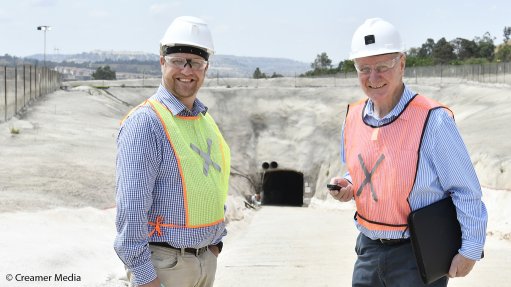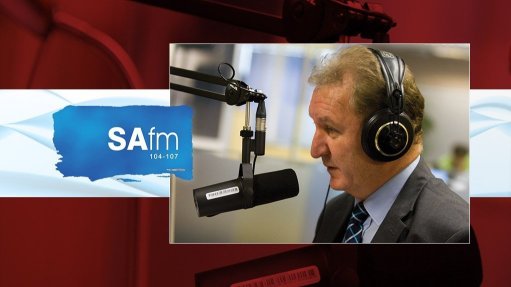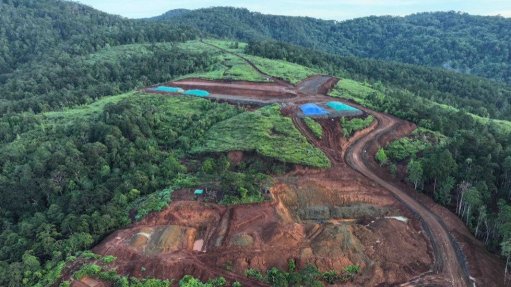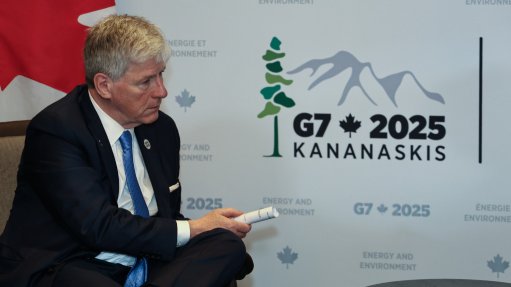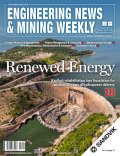Infrastructure crucial to water availability
Global professional services firm WSP | Parsons Brinckerhoff Africa says various factors contribute to the operating efficiencies of existing water infrastructure in South Africa, which affects the country’s availability of water resources, including management thereof.
WSP environment and energy MD Sean Doel indicates that there are still many remote areas on the outskirts of major towns in South Africa that are underdeveloped and have little access to basic services such as water.
He adds that, in more developed areas, existing water infrastructure was established a number of decades ago and has not been maintained to ensure maximum efficiencies. This could be as a result of lack of funding or capacity.
“For example, South Africa has about 5 000 dams, of which 1 200 are considered to be medium to large dams, which are over 40 to 50 years old. These dams are silted up with sediment that has built up over time and now sits at the bottom of the dam. “As a result, South Africa has lost on average about a quarter of the country’s water storing capacity in its dams to sedimentation,” he points out.
Additionally, the existing infrastructure of wastewater treatment plants, stormwater collection systems and combined sewer systems was designed on the basis of past hydrologic records without consideration for changes in rainfall intensity and variability resulting from climate change, says Doel. “That means that water and wastewater utility systems were not built for the stresses of extreme rainfall, extreme changes in weather patterns and temperatures that the country has been experiencing in recent years.”
Owing to this, Doel highlights that rehabilitating existing infrastructure and investing in new water infrastructure are critical for continued socioeconomic growth in the country.
Water and Infrastructure Management
WSP recounts that government has realised the importance of creating access to water resources and protecting such available resources.
The company adds that, in recent years, the Department of Water and Sanitation (DWS) has placed significant focus on improving the country’s water storage capacity. The department is also looking at the viability of a dual strategy that will include building new dams and/or increasing the capacity of existing dams either by raising the dams or reducing the amount of sediment in these dams.
Doel cites that there are plans to improve the country’s water infrastructure networks, as well as to create or improve access in areas where water services currently do not exist or are not as regularly available.
He highlights that a water-use licence or authorisation process has been established, which also forces commercial water users to track, monitor and report on their use and on any changes in the quality of the water upstream or downstream from their facilities. Doel notes that this has been an important step, as it also ensures that users can be held accountable for any water contamination resulting from activities on their site.
WSP notes that catchment management agencies (CMAs) have also been established and it remains critical that government continues pushing forward with establishing the CMAs, as these are the regulatory bodies being established by the DWS to regulate and manage water resources.
“Progress is being made on this front by government – however, it remains painfully slow,” laments Doel.
The company maintains that each of these steps remain crucial to improving overall water services within the country, though some areas still face challenges.
He points out that succeeding in water conservation and management will take input from society, the private sector and the public sector, as water is only becoming more important as a key risk area in South Africa. This is driven both by local development issues and increased rapid investment and development growth across certain regions.
Project Participation
The company adds that, from a consulting and engineering point of view, some of the more recent projects it has worked on include Riversands, Waterfall, Forest Hill and Mushroom Farm, where it has worked with the relevant developers on developing the stormwater management plans and assisted with the water use licence applications (Wula).
Some of the latest public-sector projects that WSP has been involved in include the 100 Mℓ Contermanskloof reservoir for the City of Cape Town, the 3.5 M∙/d Noupoort borehole water supply scheme for the Umsobomvu municipality, in the Northern Cape, which includes ten local learner contracts and labour-intensive construction, geohydrological investigation and Wulas.
The company is also working on three sewage treatment package plants, various bulk sewers and a stormwater master plan for St Helena Island, in the South Atlantic Ocean. WSP is also a specialist consultant for design reviews and changes, tender evaluation and mechanical construction monitoring for the 14 M∙/d Thune Dam regional water supply scheme, in Botswana. Other projects WSP is working on are the 30 Mℓ/d extensions to the Lobatse water supply scheme, in Botswana, as well as being a technical adviser to a financial lender for the design review and construction stage of a $60-million water supply scheme in Rwanda.
Article Enquiry
Email Article
Save Article
To advertise email advertising@creamermedia.co.za or click here
Press Office
Announcements
What's On
Subscribe to improve your user experience...
Option 1 (equivalent of R125 a month):
Receive a weekly copy of Creamer Media's Engineering News & Mining Weekly magazine
(print copy for those in South Africa and e-magazine for those outside of South Africa)
Receive daily email newsletters
Access to full search results
Access archive of magazine back copies
Access to Projects in Progress
Access to ONE Research Report of your choice in PDF format
Option 2 (equivalent of R375 a month):
All benefits from Option 1
PLUS
Access to Creamer Media's Research Channel Africa for ALL Research Reports, in PDF format, on various industrial and mining sectors
including Electricity; Water; Energy Transition; Hydrogen; Roads, Rail and Ports; Coal; Gold; Platinum; Battery Metals; etc.
Already a subscriber?
Forgotten your password?
Receive weekly copy of Creamer Media's Engineering News & Mining Weekly magazine (print copy for those in South Africa and e-magazine for those outside of South Africa)
➕
Recieve daily email newsletters
➕
Access to full search results
➕
Access archive of magazine back copies
➕
Access to Projects in Progress
➕
Access to ONE Research Report of your choice in PDF format
RESEARCH CHANNEL AFRICA
R4500 (equivalent of R375 a month)
SUBSCRIBEAll benefits from Option 1
➕
Access to Creamer Media's Research Channel Africa for ALL Research Reports on various industrial and mining sectors, in PDF format, including on:
Electricity
➕
Water
➕
Energy Transition
➕
Hydrogen
➕
Roads, Rail and Ports
➕
Coal
➕
Gold
➕
Platinum
➕
Battery Metals
➕
etc.
Receive all benefits from Option 1 or Option 2 delivered to numerous people at your company
➕
Multiple User names and Passwords for simultaneous log-ins
➕
Intranet integration access to all in your organisation








